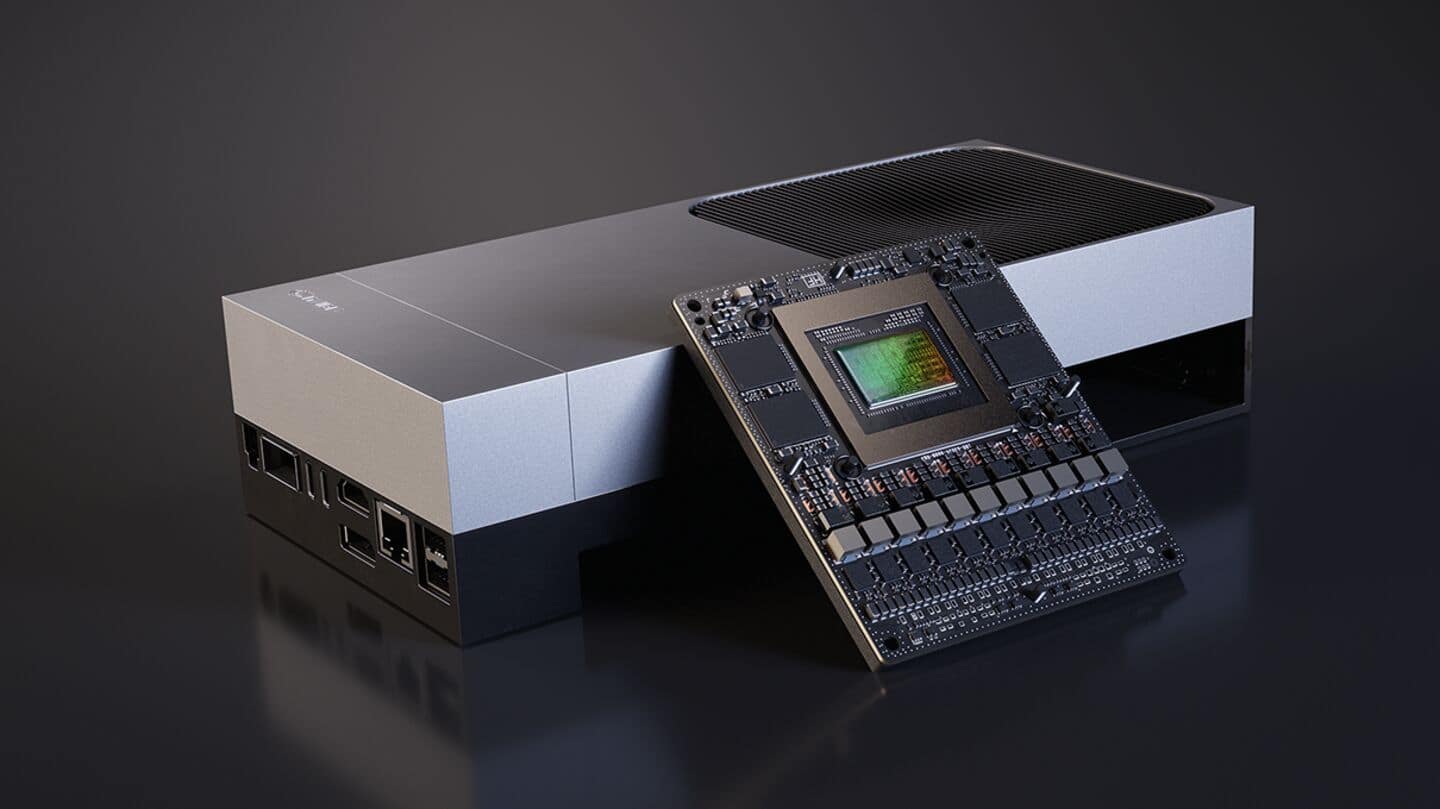
NVIDIA's new 'robot brain' brings real-time AI reasoning
What's the story
NVIDIA has unveiled its latest innovation in robotics, the Jetson Thor. This supercomputer is designed for real-time AI computation on humanoid robots and smart machines. The new model can process larger amounts of data with less energy than its predecessor, the Jetson Orin. It is powered by NVIDIA's latest Blackwell GPUs and offers over seven times the AI compute power and twice the memory capacity, with 3.5 times greater energy efficiency compared to its predecessor.
Performance boost
Early adopters include tech giants like Amazon and Meta
The Jetson Thor is a major upgrade that NVIDIA hopes will attract engineers. The company says early adopters include tech giants like Amazon, Meta, Caterpillar, and Agility Robotics. These companies are looking to use this advanced technology in their operations. The model is also being considered by John Deere and OpenAI for potential adoption in their projects.
Research use
Research labs are also using it for autonomous robots
The Jetson Thor is also being used by research labs at Stanford, Carnegie Mellon, and the University of Zurich. These institutions are using it to power autonomous robots in medical research settings. This shows the wide range of potential applications for this advanced technology in various fields.
Product availability
Developer kit now available for purchase
The developer kit Jetson AGX Thor, which comes with the Jetson T5000 module, reference carrier board, power supply, and an active heatsink with a fan, is now available for purchase on NVIDIA's website starting at $3,499. The company has also announced the pre-order of NVIDIA Drive AGX Thor. This developer kit uses the same technology but is intended for autonomous vehicles instead of robots.
Future prospects
Robotics is the next big opportunity for NVIDIA
NVIDIA CEO Jensen Huang has high hopes for the future of robotics, calling it one of the biggest opportunities outside AI. He believes that this decade will be dominated by autonomous vehicles (AVs), robotics, and autonomous machines. Along with AI, Huang expects robotics to drive the most growth for NVIDIA in the coming years.